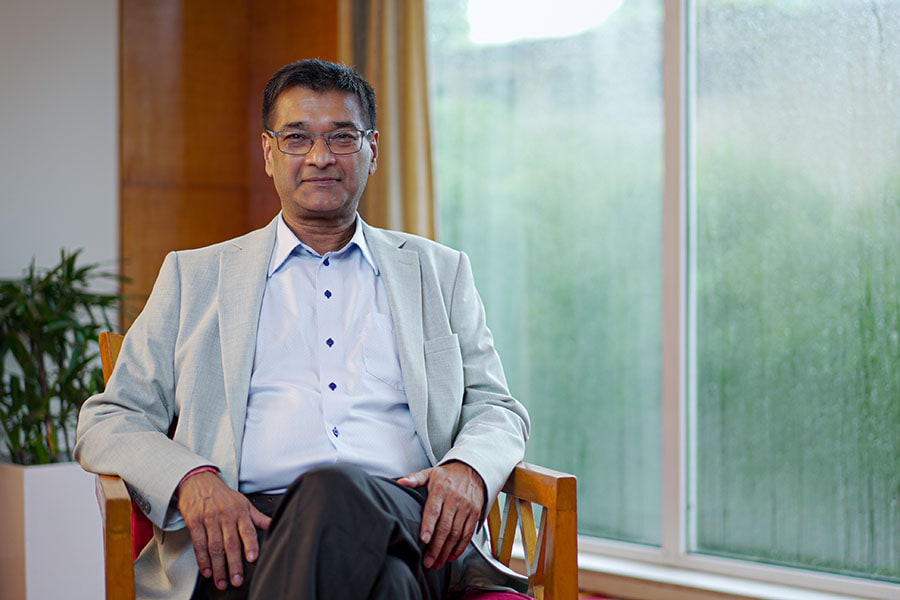
L&T Semiconductor has a pipeline of 20 automotive clients so far: CEO Sandeep Kumar
Sandeep Kumar, CEO of the company, on L&T's entry into the sunrise sector and the areas India needs to focus on while building the semiconductor ecosystem
 Sandeep Kumar, CEO of L&T Semiconductor Technologies
Sandeep Kumar, CEO of L&T Semiconductor Technologies
Back in 1986, five fresh-out-of-college students who had joined semiconductor giant Texas Instruments (TI) were about to make a breakthrough. When Apple, Microsoft, and the like were making microprocessor units (MPUs) used in servers, desktop computers, and mobile computing devices, Dallas-based TI formed a new team and tasked the young guns with making microcontroller units (MCUs) that go into refrigerators, washing machines, and cars, among other devices. TI's focus was more on microcontrollers, as they don't require complex operating systems to function, whereas microprocessors do.
“We were successful in making the first cell phone chip, the Adaptive Voltage Scaling (AVS) microcontroller, and the engine controller. We built it from zero to roughly $700 million in business in 10 years,” recalls Sandeep Kumar, CEO of L&T Semiconductor Technologies. After completing his BTech from IIT Delhi, Kumar, who hails from Chandigarh, moved to the US and did his MS in Electrical Engineering at the University of Cincinnati before joining TI.
Cut to 2021, and life came full circle when Kumar's classmate from IIT, heading L&T’s defence business, suggested he build a semiconductor company in India. Kumar put together a plan and approached multiple companies, including L&T. Two years later, Larsen and Toubro showed interest, but instead of investing in the company, they asked him to start the whole business for them. In 2023, L&T Semiconductor Technologies (LTSCT), a fully owned subsidiary of L&T, came to life, and Kumar assumed the role of CEO in November.
LTSCT is a fabless semiconductor company that will focus on designing chips. They will outsource the manufacturing to US-based Global Foundry, Taiwan’s TSMC, and Vanguard. Their product portfolio includes smart devices across MEMS sensors, power, analog, mixed-signal, and radio-frequency (RF) products to support automotive, industrial, and energy verticals. LTSCT has onboarded six automobile companies, and the total value of the deal is $150 million per year. “We have a pipeline of roughly 20 automotive clients in Europe, Japan, and India, and out of these, we are signing six. The rest will also be signed soon,” says 61-year-old Kumar, who lives in Austin but is currently in India.
The engineering and construction conglomerate is taking the route of "chip design" rather than "chip making" as there is a dearth of an indigenous chip design company that can build designs and intellectual property (IP) in India. There are a number of small startups working in the semiconductor design space, but none of them has made it big. LTSCT’s focus on designing custom application-specific integrated circuits (ASIC)-based chip solutions would help them carve a niche, especially with the growing boom for compute as we enter the AI era, says Neil Shah, vice president of Counterpoint Research.


















